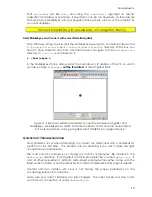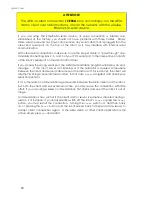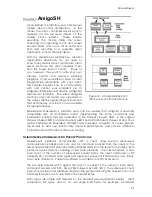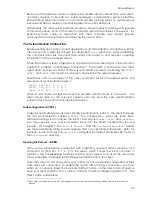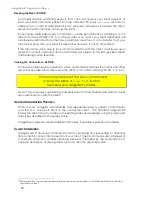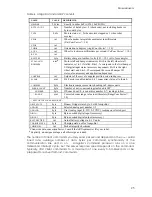
M
OBILE
R
OBOTS
ROTVELMAX
int
Current max rotation speed; deg/sec.
TRANSVELMAX
int
Current max translation speed; mm/sec.
ROTACC
int
Current rotation acceleration; deg/sec
2
ROTDECEL
int
Current rotation deceleration; deg/sec
2
ROTKP
int
Current Proportional PID for rotation
ROTKV
int
Current Derivative PID for rotation
ROTKI
int
Current Integral PID for rotation
TRANSACC
int
Current translation acceleration; mm/sec
2
TRANSDECEL
int Current
translation deceleration; mm/sec
2
TRANSKP
int
Current Proportional PID for translation.
TRANSKV
int
Current Derivative PID for translation.
TRANSKI
int
Current Integral PID for translation.
FRONTBUMPS
byte
Number of front bumper segments.
REARBUMPS
byte
Number of rear bumper segments.
CHARGER
byte
1 if P3/PeopleBot or 2 if PowerBot automated charger mechanism and circuitry
installed in robot; otherwise 0.
SONARCYCLE
byte Sonar
duty
cycle
time in milliseconds.
AUTOBAUD
byte
1 if the client can change baud rates; 2 if auto-baud implemented.
HASGYRO
byte
1 if robot equipped with the gyro heading correction device; otherwise 0.
DRIFTFACTOR
int
Working drift factor value.
AUX
2
BAUD
byte
Baud rate for AUX2 serial port; see HostBaud.
AUX
3
BAUD
byte
Baud rate for AUX3 serial port; see HostBaud.
TICKSMM
int
Encoder ticks per millimeter tire motion
SHUTDOWNVOLTS
int
DC volts X10 at or below which the onboard PC will shut down
VERSIONMAJOR
VERSIONMINOR
str
str
Null-terminated strings for AmigoSH version numbers
CHARGETHRESH
int
DC volts X10 for PowerBot’s charger threshold.
S
ERIAL
The baud rates for the
Host
and
Aux
serial ports initially are set from their respective
FLASH-based defaults and get reset to those values whenever the controller is reset or
upon client disconnection. For advanced serial port management from the client side,
AmigoSH provides four commands which let your client software reset the
Host
(
HOSTBAUD
#50),
Aux1
(
AUX1BAUD
#51),
Aux2
(
AUX2BAUD
#52), and
Aux3
(
AUX3BAUD
#53)
serial port baud rates, respectively. Use the integer command argument values: 0=9600,
1=19.2K, 2=38.8K, 3=57.6K, or 4=115.2K baud, respectively.
With auto-bauding, the
Host
serial port automatically reverts to its FLASH default baud
rate if, after being reset by the
HOSTBAUD
client command, it does not receive a
subsequent and valid client-command packet within 500 milliseconds.
HOST-to-AUX Serial Transfers
Use the client-side
TTY2
command #42 with a string argument to have that string sent
out the Aux1 port to the attached serial device, such as a robotic camera. Similarly, use
the
TTY3
command #66 to send a string argument out the Aux2 port, or
TTY4
command
#60 to send a HOST-mediated client string out the Aux3 port.
AmigoSH also maintains three circular buffers for incoming serial data from the respective
Aux ports. On request, AmigoSH sends successive portions of the buffer to your client via
the HOST serial in the respective
SERAUXpac
(type = 176; 0xB0),
SERAUX2pac
(type = 184;
0xB8), and SERAUX3 (type = 200; 0xC8) SIPs. Use the
GETAUX
#43 for Aux1,
GETAUX2
command #67 for Aux2, and GETAUX3 command #61 for Aux3.
Use the integer argument value of zero to flush the contents of the respective buffer.
Otherwise, use an argument value of up to 253 bytes to have AmigoSH wait to collect
33

